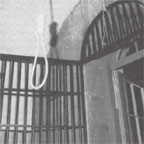
CRIME AND PUNISHMENT
Author - Anil Chawla

|
CRIME AND PUNISHMENT
|
Indians love to hate themselves for almost everything. Whenever a resident Indian meets a foreigner or even a non-resident Indian, the resident is apologetic about potholes on roads, about cattle on streets, about stray dogs, about corruption, about uncouth politicians, about this and about that. If an Indian is proud of anything, it is generally about the past - history, religion, spirituality etc. Regarding today's India, Indians show pride on the achievements of software industry. Once that has been discussed, it is back to the usual routine of being apologetic. But, there is something that Indians ought to be really proud of -- India has one of the lowest rates of sexual crimes in the world.
According to National Crime Research Bureau of India, rape rate in India is just about 1.5 per 100,000, while it is about 32 per 100,000 in USA. These statistics (quoted from memory) are based on police reports. It used to be said that large number of rape cases must be going unreported in India. Data from 1992 and 1996 International Crime Surveys carried out by UNICRI, Rome confirms that India does indeed have one of the lowest rates of sexual incidents in the world. (For more statistics please refer to the annexure)
Indian police forces are among the most primitive and corrupt ones in the world. Judicial system is not much better. USA is the richest country of the world. The police force of USA is equipped with the best possible equipment and is trained in the best possible manner. Americans take pride in their efficient judicial system. The natural question that comes to one's mind is -- in spite of undoubted superiority of US law enforcement system, why is it that women are relatively much safer in India than in USA?
It is not just the women who are unsafe in USA. Chances of burglary in USA are more than double compared to Mumbai. The chances of being robbed in rich USA are about six times higher than in poor slum-infested Mumbai. Assault or threat of assault in USA is at least thrice as likely as in Mumbai. And if you park your car on an American street, you are ten times more likely to see your car vandalized.
Would the USA be able to reduce its crime rate if the country employed a larger number of police officers or increased the size of judiciary? The number of sworn officers of local agencies in USA is 1.5 per 1,000 of population. The total police personnel are surely much higher than the number of sworn officers. On the other hand, the ratio of total police personnel to population in India has been in the range of 1.2 to 1.3 per 1,000 persons - this appears to be less than half of the corresponding ratio for USA. The number of judges per million of population is about 12 in India, while it is 41 in Australia, 51 in the United Kingdom, 75 in Canada, and 107 in United States of America.
It seems logical to conclude that high police-population and judge-population ratios, combined with vast technological superiority and relative absence of corruption in police and judiciary have failed to reduce the crime rates in 'advanced' USA to the level of 'wretched' India. Obviously, police and judiciary have a limited or marginal role in reducing crime. Police and judiciary can become active only after a crime has been committed. They can at best hope that their actions that lead to punishment will have a deterrent effect leading, in due course, to prevention of further crime.
Punishment is supposed to be a deterrent to crime. It is supposed to instill a sense of fear in a would-be criminal. Fear is undoubtedly a strong emotion. However, its efficacy in crime prevention is doubtful. Most states of the United States have capital punishment, while most European industrialized countries have abolished death penalty. Yet, the US has a murder rate about three times as high as most of Europe. In Canada, homicide rate per 100,000 population fell from a peak of 3.09 in 1975, the year before the abolition of death penalty for murder, to 2.41 in 1980, and since then it has declined further. In 2002, 26 years after abolition, the homicide rate was 1.85 per 100,000 population, 40 per cent lower than in 1975. (Source - http://web.amnesty.org/pages/deathpenalty-facts-eng)

If fear of death penalty is not sufficient to prevent murders, the argument about fear preventing crime cannot stand. Deterrent theory of punishment has often been used to justify harsh punishments, even though there is sufficient body of evidence to show that harsher punishments do not, in the long term, lead to reduction in crime. On the contrary, harsh punishments induce a brutal mindset in the society, leading to increased crime rate. A brutal mind has no place for love or kindness. More about this later!
The other popular theory of punishment is retributive. The retributive notion of punishment in general is that (a) as a foundational matter of justice, criminals deserve punishment, and (b) punishment should be equal to the harm done. In determining what counts as "punishment equal to harm," theorists further distinguish between two types of retributive punishment. First, lex talionis retribution involves punishment in kind and is commonly expressed in the expression "an eye for an eye." Second, lex salica retribution involves punishment through compensation, and the harm inflicted can be repaired by payment or atonement. One of the most early written statements of lex talionis or "eye for an eye" perspective is from the 18th century BCE Babylonian Law of Hammurabi:
If a builder builds a house for someone, and does not construct it properly, and the house which he built falls in and kills its owner, then that builder shall be put to death. If it kills the son of the owner, then the son of that builder shall be put to death."
The retributive theory is based on the psychological theory of revenge. "An eye for an eye" theory ignores the fact that a society that follows this rule will soon have only blind persons. In India, Bhind (a district of North Madhya Pradesh, made famous by Hindi films that show dacoits who take to the ravines near river Chambal) has a culture of revenge. Not surprisingly, Bhind has an unusually high crime rate and has hardly any industrial development. It can be said as a universal rule that a society, which glorifies revenge and makes it a social value, becomes doomed to perish into a morass of death. Vengeance is a human emotion, which should be tempered just like the natural feelings of lust, greed, jealousy and fear.
A society is built on foundations of love, compassion, and kindness. Every religion in the world talks of these values. Modern laws, police, judiciary and punishments ignore these values and instead bank on the negative emotions of lust, greed, jealously and fear. Coupled with the emphasis on these negative emotions is the brutal (but highly popular) culture of "toughness," that drives much of the demand for "hard" justice and maximum punishment. To forget and to forgive is seen as wimpy and sissy, by this culture.
In the popular culture propounded by TV serials and Hollywood and Bollywood films, a murderer is admired as the ultimate tough guy. There is an obsession with men and women who are "go-getters" and are not ready "to take no nonsense from nobody". Doggedly selfish pursuit of one's own ambitions and dreams even at the cost of trampling upon one's loved ones is portrayed as the ideal. Success, measured in physical or financial terms, is viewed as the only yardstick of a good life. This social milieu is truly an anti-thesis of religious life.
Religions, across the world for thousands of years, have preached for control 'animal' instincts like lust, greed, jealousy, fear and selfishness. Religions advise one to adopt kindness, compassion, empathy, love etc. A society without the soothing touch of the soft values propounded by religions is bound to be brutal and barbaric. The war between animal instincts and soft values has been going on since times immemorial. In Hindu mythology, it comes up as the war between sur and asur (dev-danav). In Christian mythology, it is the fight between forces of God and Devil. Both are two contradictory aspects of human nature. In a mob, animal instincts are to the fore. At every point in history, some wise men or leaders are needed to stop a population from becoming mob-like. The sad fact is that in recent times, there is a dearth of leaders and an explosion of 'service-providers' who are more than willing to play to the meanest and the basest instincts of every mob that has the money to pay for it.
In this environment, cries for revenge are always shrill and loud, while voices pleading for restraint and love are muted. In August 2004, India was gripped by a debate about death penalty to Dhananjay Chatterjee on charges of rape and murder of a schoolgirl. Organizations working in the field of women's rights and welfare wanted Dhananjay to be hanged. A young woman had died and they wanted justice by making sure that the person accused of the crime was killed - a classic case of revenge and retributive justice.
The zealous women crying for the blood of a poor man believed that they were making the world a safer place for women to live in by making sure that at least one rapist and murderer was hanged. They did not realize that a brutal world, where revenge and retribution rule, can never be safe for women. None of these women's organizations (as far as I know) is willing to look deeper into the social processes that make a women's life safe and secure.
I had once informally asked Chairperson, National Commission for Women (NCW) to sponsor a study to examine the rates of sex crimes in different communities governed by different personal laws. There are four different sets of personal laws in India - Hindu law for Hindus, Shariat for Muslims, Special laws for Christians, and customary laws for tribals. It is my hypotheses that tribes, who have a highly tolerant attitude in marriage and sex related matters, have hardly any sex crimes. I wanted NCW to sponsor a study to examine the hypotheses. The Chairperson of NCW was horrified. Probably, she sensed the truth of my hypothesis and did not want to get involved with a controversy. This hypocrisy is typical in India of most so-called women welfare organizations and activists, who are rarely willing to look beyond the straitjacket of Western cultural norms, little realizing that women in West suffer much more crime than women in India do.
Building a society, where crime is reduced to a minimum, should be a matter of concern for every right-thinking person in every part of the globe. Social norms and legal structures of societies with low crime rates must be studied in depth and adopted by the countries where crime rates are high. While Indians pride on the low rate of sexual incidents, they should be concerned about the fact that in the past fifty years, statistics of rape in India has trebled from about 0.5 per 100,000 to about 1.5 per 100,000. Social factors, forces and phenomenon behind this increasing graph must be understood and necessary corrective action should be taken.
Of course, studying social trends and forces is a painstaking work. It is much simpler to turn the hanging of a poor man into a national event - the ostensible argument being justice, deterrence and retribution. Indians may not pride themselves on their low crime rate, but we can surely take pride on our media's expertise in turning anything and everything - even death - into a grand celebration. No wonder, Dhananjay's much-publicized execution inspired children across the country to enact a drama of hanging themselves - three died. So much for deterrence!
Anil Chawla
1 October 2004
As part of International Crime Surveys carried out by UNICRI, Rome randomly chosen persons were asked about whether they were victims of a crime. In this way the survey covered reported as well as unreported crime. In developing countries, the survey was carried out in major cities only. The following figures about sexual incidents in various cities of the developing world are interesting:
For industrialized countries, the comparable figures are for countries and not for cities. The following figures are from the survey in 1995/1996:
Figures from cities of Eastern Europe are as follows:
Please click here to see complete statistical tables as published by UNICRI.
For details of the above statistics including methodology and
questionnaire, please refer to




http://ruljis.leidenuniv.nl/group/jfcr/www/icvs/Index.htm
The statistics provided by UNICRI do not really convey the terrible state of affairs in the so-called developed world. The following facts about United States of America are startling:
Source of above statistics -

http://oak.cats.ohiou.edu/~ad361896/anne/cease/rapestatisticspage.html
[Probability statistics compiled by NCPA from US Department of Justice statistics. See www.ncpa.org/studies/s229/s229.html]
Above statistics are from RAINN. For more statistics
and links to all primary sources, see

RAINN's Statistics Archive
http://www.rainn.org/statistics.html

Almost one month before writing the above article, the author had written an article Innocence and Guilt about grant of mercy to Dhananjoy Chatterjee. If you have enjoyed reading the article on this page, you may like to read that article.
Please write to me your comments about the above article.
 samarthbharatparty@gmail.com
samarthbharatparty@gmail.com

ANIL CHAWLA is an engineer (and now a lawyer too) by qualification but a philosopher by vocation and a management consultant by profession.

© All Rights Free